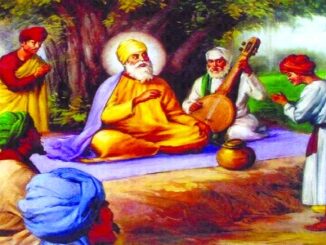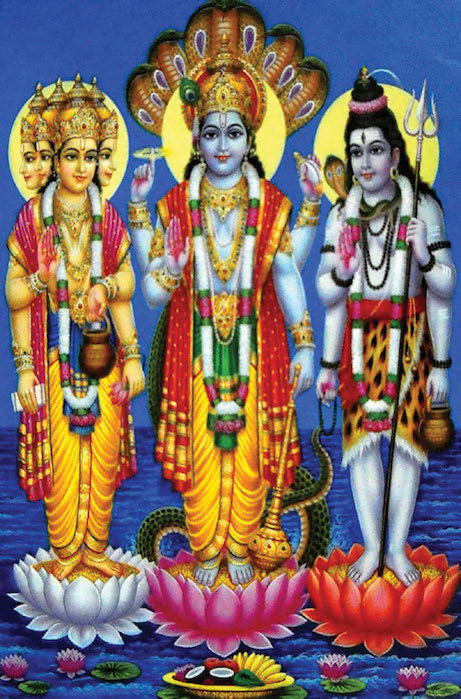
As the lamps of Diwali slowly fade and the fragrance of sweets still lingers in the air, India celebrates one of its most tender and heartfelt festivals-Bhai Dooj, the Festival of Sibling Love. Marking the fifth and final day of the Diwali celebrations, Bhai Dooj (also known as Bhaiya Dooj, Bhau Beej, or Yama Dwitiya) honors the timeless bond of affection, trust, and protection between brothers and sisters.
If Raksha Bandhan is the thread that ties brothers and sisters together, Bhai Dooj is the reaffirmation of that bond through blessings, prayers, and gratitude. It is a day when sisters pray for the long and prosperous lives of their brothers, while brothers, in turn, promise to protect and cherish them forever.
The Mythological Origins: The Tale of Yamuna and Yama
The origins of Bhai Dooj lie in a deeply symbolic and touching legend from Hindu mythology involving Yamuna, the sacred river, and her brother Yama, the god of death and justice.
According to ancient texts, Yama had been away for a long time, carrying out his divine duties in the underworld. His sister Yamuna missed him dearly and often invited him to visit her home. After many years, Yama finally accepted her invitation and came to see her on the second day of the Shukla Paksha in the Hindu month of Kartika.
Yamuna joyfully welcomed her brother with a grand feast, applied a tilak (vermilion mark) on his forehead, and performed aarti, praying for his happiness and immortality. Touched by her affection and devotion, Yama was moved and granted her a boon-that on this day, any brother who visits his sister and receives a tilak from her would be blessed with a long, prosperous, and fearless life.
From that day, the festival of Bhai Dooj or Yama Dwitiya came to be celebrated as a sacred occasion symbolizing the loving bond between brothers and sisters and the triumph of affection over separation.
Symbolic Meaning of the Rituals
The essence of Bhai Dooj goes beyond the simple exchange of gifts and sweets-it is rooted in love, protection, and gratitude. The tilak ceremony symbolizes a sister’s heartfelt prayers for her brother’s well-being and the divine shield of her blessings. The brother’s visit, in return, reflects his respect, affection, and protective duty toward his sister.
The five dots often drawn on the brother’s forehead during the ritual represent Panchatatva-the five elements of life (earth, water, fire, air, and space)-invoking harmony and balance. The aarti performed by the sister signifies illumination and divine guidance in the brother’s life, while the exchange of sweets reflects the wish for sweetness and peace in their relationship.
Celebrations Across India: Diverse names, Shared Emotions
While the sentiment of Bhai Dooj is universal, its name, customs, and flavors vary beautifully across India’s regions.
– In North India, the festival is widely known as Bhai Dooj or Bhaiya Dooj. Sisters prepare festive dishes, apply tilak to their brothers’ foreheads, and pray for their long lives. Brothers give gifts, clothes, or money as tokens of love.
In Maharashtra, Goa, and Karnataka, it is called Bhau Beej. Sisters perform the ritual by drawing a square on the floor where the brother sits, symbolizing a sacred protective space. In some communities, brothers who cannot visit send symbolic gifts or even coconuts as a token of remembrance.
– In Bengal, it is known as Bhai Phonta, and the rituals are especially elaborate. Sisters observe a fast until they perform the phonta (tilak) ceremony, and brothers are treated to special Bengali delicacies like sandesh and mishti doi.
– In Nepal, the festival is celebrated as Bhai Tika, one of the most important festivals after Dashain. The sisters apply multi-colored tikas on their brothers’ foreheads and place garlands of marigolds around their necks, praying for their safety and longevity.
In every version, the essence remains the same-a reaffirmation of love and mutual respect between siblings, transcending distance and time.
The Modern Meaning: Beyond Rituals
In today’s times, as families become more dispersed and lifestyles more demanding, Bhai Dooj carries an even deeper significance. It is a day to pause, reconnect, and celebrate familial bonds that often get overshadowed by modern life’s pace. Even if brothers and sisters are separated by distance, they mark the occasion virtually-exchanging video calls, gifts, and heartfelt messages, proving that love transcends physical presence.
Beyond blood relations, the festival also celebrates chosen family-many people now extend the spirit of Bhai Dooj to cousins, friends, or even colleagues who share sibling-like affection and trust.
It’s not just a festival-it’s a reminder of the emotional and spiritual balance that the relationship between a brother and sister brings into one’s life: the nurturing care of the sister and the reassuring protection of the brother.
Spiritual and Social Symbolism
Bhai Dooj carries a universal spiritual symbolism that mirrors the larger philosophy of Diwali itself-the victory of light over darkness, love over isolation, and connection over indifference. The brother, representing strength and duty, and the sister, representing compassion and nurturing, together symbolize the harmony of masculine and feminine energies that sustain family and society.
The festival also conveys a moral message: that no matter how powerful one becomes (like Yama, the god of death), the bonds of affection, respect, and humility must always guide one’s heart.
As the Diwali festivities draw to a close, Bhai Dooj serves as the perfect emotional epilogue-an intimate reminder that beneath the glitter of lamps and sweets lies the enduring light of human relationships. It is a celebration of love that protects, and protection that loves.
From the mythic meeting of Yama and Yamuna to the laughter shared between modern-day siblings, Bhai Dooj continues to weave hearts together across generations. Whether through a simple tilak, a heartfelt blessing, or a cherished memory, the message remains timeless-that the bond of a brother and sister is among life’s purest and most enduring gifts.





Be the first to comment